NORTH WALES COAST
RAILWAY: NOTICE BOARD
Rheilffordd arfordir gogledd Cymru: Hysbysfwrdd
18 April 2011
 Last issue
Last issue Archive
Archive Contributions and comments are encouraged: see the Contributions Page
This site is dedicated to all our regular contributors and supporters, and especially the rail staff of North Wales.
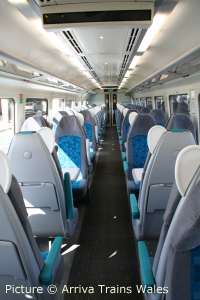
Forthcoming events
April 2011
Thursday 28 April Merseyside Railway History Group Richard Kells: Quiz and informal evening
May 2011
Thursday 12 May Llandudno and Conwy Valley Railway Society
A presentation by Paul Lewin, General Manager, FR/WHR on the current
operations of these two fascinating railways.
Thursday 12 May Steam at Chester 'The Cathedrals Explorer' Steam Dreams Oxenholme - Carmarthen via Chester - Shrewsbury - Llandrindod.
Friday 13 May Excursion 'The North Wales Scotsman' Compass Tours Holyhead, Llanfairpwll, Bangor, Llandudno Junction, Colwyn Bay, Rhyl, Flint & Chester to Dundee via the Forth & Tay Bridges.
June 2011
Sunday 19 June Steam on the Coast: Northern Belle Father's Day Special. Crewe-Holyhead and return with 46201 Princess Elizabeth.
See the Calendar page for more details and later dates.
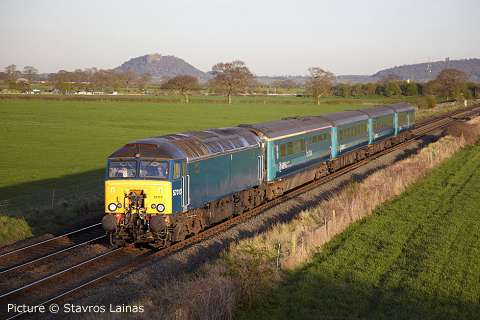
57 313 at Hargrave with the evening Cardiff - Holyhead express, 8 April (Stavros Lainas).
37 429 in its heyday
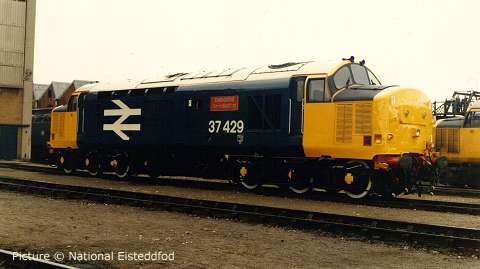
Further to our previous adulation of 37 429 Eisteddfod Genedlaethol, by courtesy of Dafydd Roberts and the National Eisteddfod archives we can bring you some pictures from summer 1987 when the loco starred in a naming ceremony. The first two show it outside (we believe) Cardiff Canton diesel depot having been prepared for the big day.
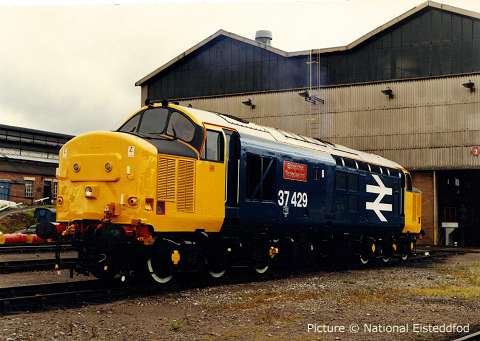
This was the second name carried by 429; for a few months in 1987 it carried the Sir Dyfed / County of Dyfed plates transferred from 37 180. In order for 429, at the time Cardiff-allocated passenger loco, to become the Eisteddfod celebrity, they were removed, and later appeared on 37 799.
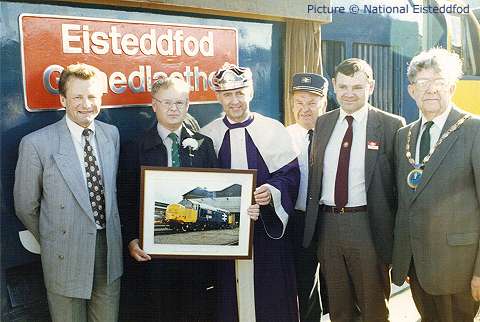
Here's the naming ceremony, carried out on 4 August 1987 on the station at Porthmadog, the town hosting the National Eisteddfod that year. The presentation photograph was clearly taken at the same time as the one above. Dafydd Roberts writes: ' I can identify Dafydd Elis Thomas (who was at that time MP for Meirionnydd) on the left hand side; in his Eisteddfodic gown is John Gruffydd Jones who won the Crown at that Eisteddfod. But who are the others?'
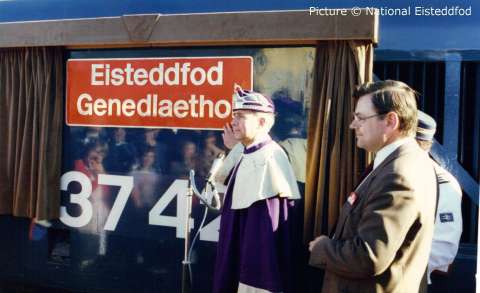
Any identifications would be very very welcome. Notice how the loco side was so highly polished that the assembled spectators can be seen reflected. We don't expect any identifications of any of them ... but was any reader present on the occasion? The ceremony was conducted in Welsh, according to Marsden & Ford's Encyclopaedia of Modern Traction Names.
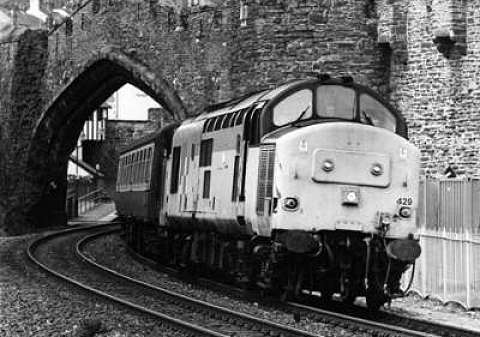
A couple of years later, 429 was transferred to the Railfreight sector, and repainted in 'construction' colours. In 1993 it was chosen to return to passenger work, on the North Wales Coast, and as such is seen in Larry Goddard's picture (from the website archive) at Conwy in early 1993. Note that the nameplate is missing.
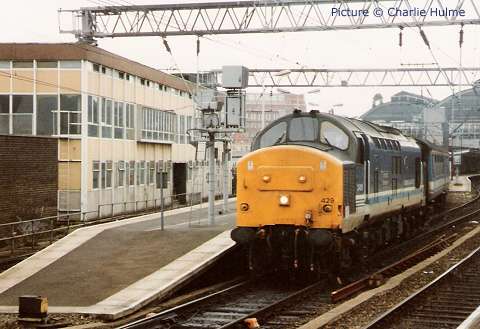
Finally, one from our own archives, showing 429 after repainting in Regional Railways colours, and its nameplates restored with a black background. The place is Manchester Piccadilly on arrival with the 'Irish Mancunian' from Holyhead. Date unknown, but quite early in the 'North Wales 37' era as the first coach can be seen to be still in the modified Network SouthEast livery in which a number of these vehicles ran after being transferred from the London - Exeter route. Today, neither the loco nor London Road signalbox, seen in the background, still exists.
First refurbished 158 enters traffic
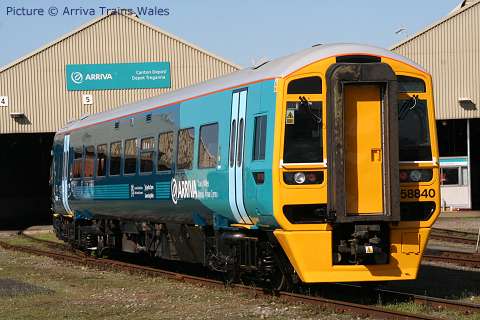
Fast-forward to 2011, and another shiny train posing at Cardiff Canton depot. Thanks to Ben Davies of Arriva Trains Wales for this view of 158 840, the first Class 158 to complete the Welsh Assembly Government -funded makeover programme, the work being done by Arriva at their LNWR works in Crewe.
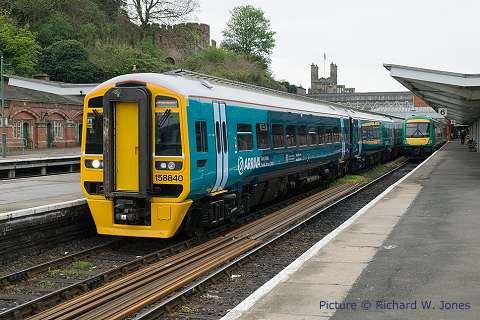
On 15 April the unit entered service, on the Cambrian lines. Above, it stands in Platform 5 at Shrewsbury (Richard W. Jones)
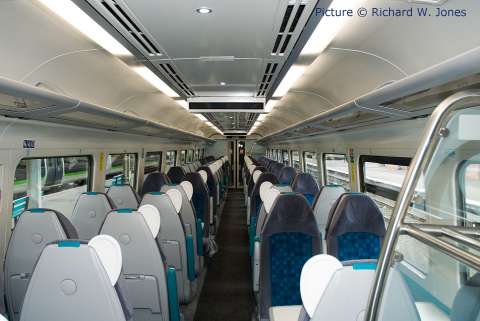
The interior features the high-backed seats which have been used in recent refurbishments by other train companies, mostly arranged in airline' format. The upholstery pattern matches that being installed in the Class 175 units (Richard W. Jones)
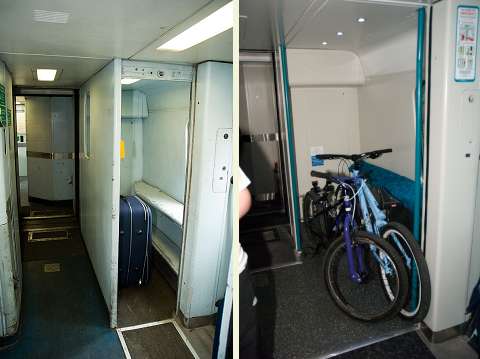
Particularly welcome is the opening out of the bike space. The old version (left) was a nightmare to manoeuvre two bikes into; the new version (right) is a vast improvement.
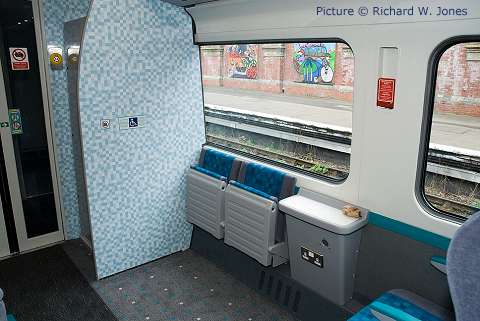
Wheelchair space (Richard W. Jones)
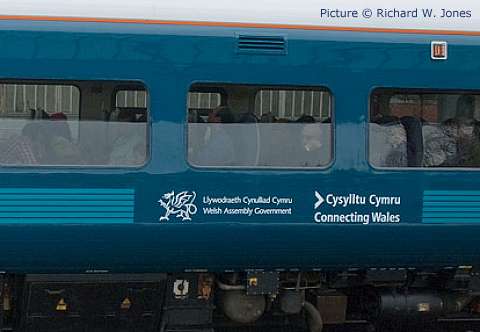
The Government gets a credit in the livery, which otherwise is the same as that first seen on the Class 57/3 locomotives.
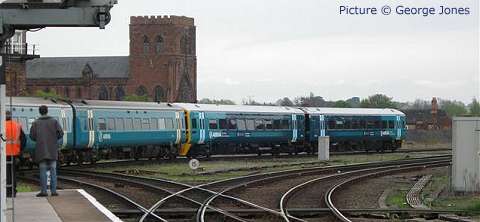
Arriving at Shrewsbury from Birmingham; 158 820, attached, shows the previous Arriva livery (George Jones). More pictures next time.
Club 55 to the Heart of Wales - with Vince Chadwick
On 29 March, a friend and I decided to make use of the ATW 'Club 55' offer of any destination on the ATW network for £15 return - £13 with a senior railcard. But where to go? We live in Wilmslow, so we are on the ATW Manchester to South Wales route and decided on Swansea as our destination. Outbound, we'd use the picturesque and delightful single-track 'Heart of Wales' line. We'd return by the faster direct route via Cardiff and Marches through Hereford and Ludlow.
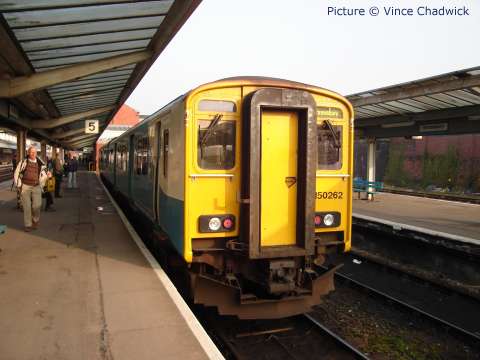
We caught the 07:47 class 175 Milford Haven service from Wilmslow as far as Shrewsbury, where we boarded the lightly-loaded 09:05 train formed of 150 262 (above) for the Heart of Wales line journey. This follows the main line to South Wales as far as Craven Arms, where it turns sharp right onto the delightful single track Heart of Wales line. The weather was dry but misty so we didn't get all the glorious views that this line usually offers. However, the journey was delightful.
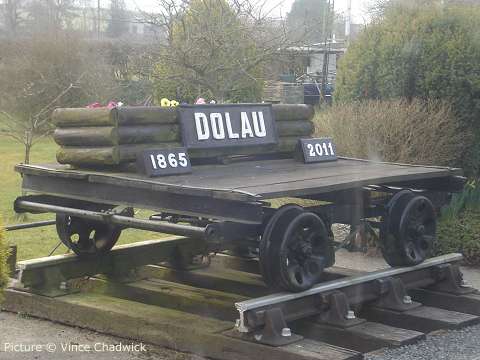
The tiny halt at Dolau has an active group of station-adopters, who have won awards for their care of the place, and provide this interesting exhibit on the platform.
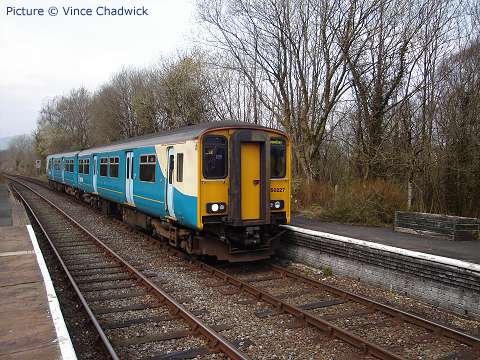
The 121 miles between Swansea and Shrewsbury includes the Radnor Forest between Llandrindod Wells and Knighton, the Eppynt hills near Llanwrtyd Wells (above Llanwrtyd station, with 150 227 crossing on a northbound train ), the meandering river Tywi between Llandeilo and Llandovery, and the Loughor estuary near Llanelli.
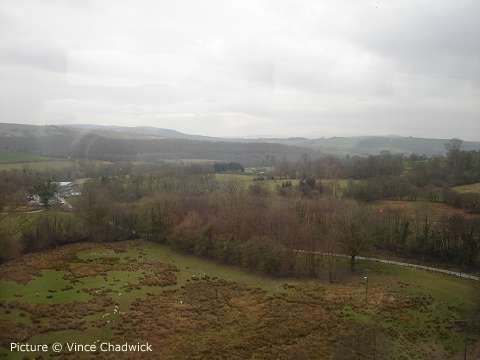
The view from Cynghordy viaduct, which has eighteen arches built in sandstone and lined with brick. It is 259 m long on a gentle curve, at a height of 31 m above the valley.
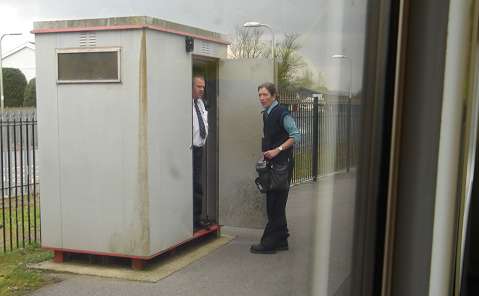
The single line between the crossing loops on this route is protected by tokens, which are exchanged by the train crew from standard 'electric key token' instruments in on-station sheds such as this one at Llandovery, under the overall control of the signalman at Pantyffynnon signal box. [See the article on 'No-Signalman Token Remote' at the superb www.railsigns.co.uk website.]
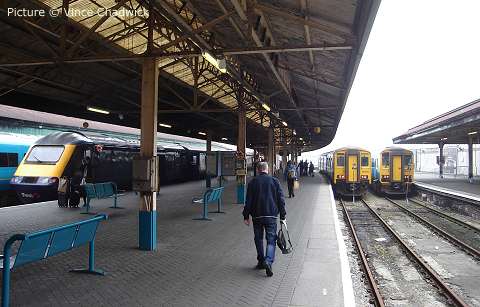
At Llanelli the train reversed for the short leg to Swansea (above where we arrived several minutes early, at 12:55, just in time for a 'swift pint' in Swansea.
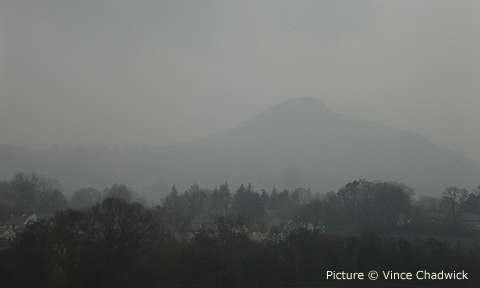
The return journey was on the 13:55 class 175 to Manchester via Cardiff and The Marches line. Above: a misty Skirrid, near Abergavenny, as seen from the train home. Like our morning train from Wilmslow to Shrewsbury, this was a 2-coach unit and therefore somewhat overcrowded, though from Cardiff onwards it was less so. We sped up The Marches line to Shrewsbury, then onwards to Crewe to arrive on time in Wilmslow at 17:45.
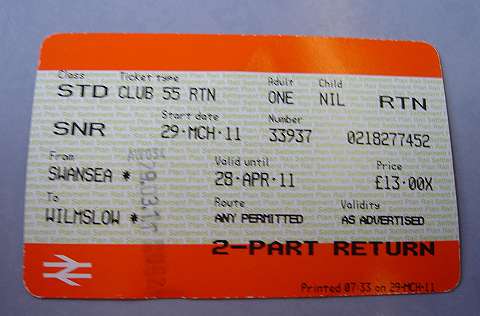
What a great day out on some of Wales' most scenic railways, and all for £13!
The Cheshireman
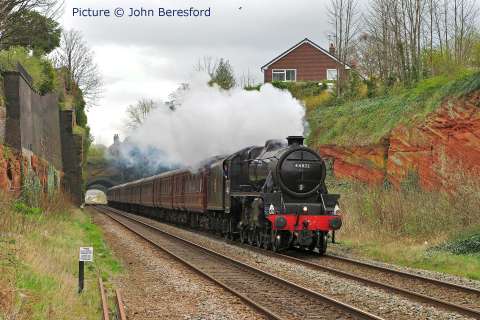
The 'Cheshireman' was an excursion from Cleethorpes to Chester on 2 April, powered by 'Black 5' 4-6-0 44871. Above, it is heading for Chester at Frodsham (John Beresford)
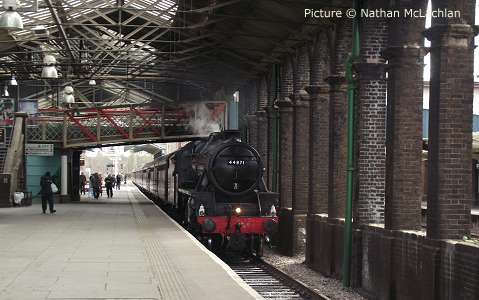
Arriving in Platform 4 at Chester (Nathan McLachlan).
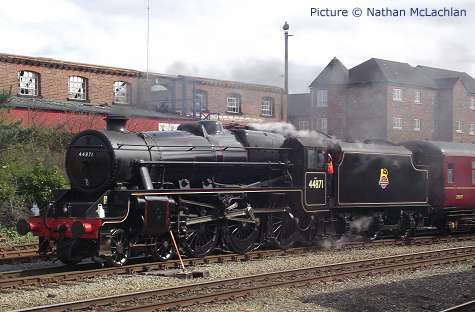
Basking in the sun in the sidings in Chester, with the burnt-out ruin of the old goods shed as a backdrop (Nathan McLachlan).
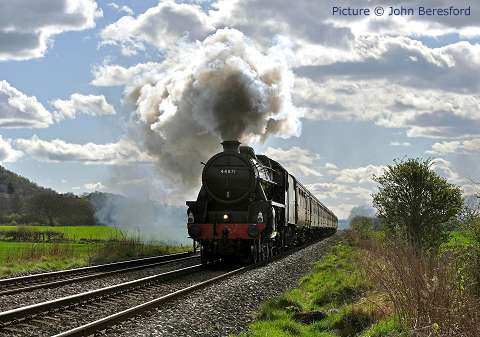
The return train at Frodsham. John Beresford writes: 'The sound of its exhaust and whistle in the distance climbing to Frodsham more
than compensated for the failure of booked loco Tangmere to appear - indeed the sight of a 'five' working hard with an all-maroon set of coaches on this line reminded me of the famous Manchester - North Wales 'club trains' of the steam era.
Club 55 to Milford Haven - with George Jones
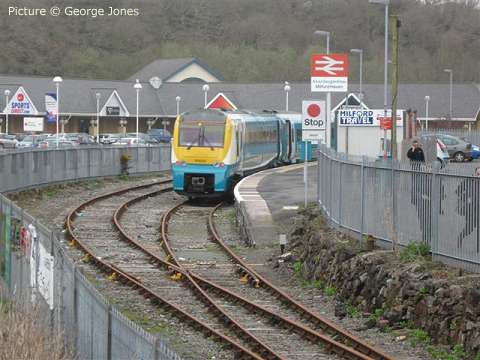
Having made it to Fishguard last year our intrepid band set out for that other extremity of the ATW network - Milford Haven - making use of the WAG Express and coming together at Shrewsbury for the 08:10 departure behind 57 316. Two of us could have gone forward earlier on 175 007 headed for Milford Haven but the allure of 57 haulage in mark 2 stock won the day. Arrival at Cardiff Central for 09:57 provided cross-platform access to the 10:04 Milford Haven departure - with 175 007 which had been waiting for us.
The run along South Wales calling in at Swansea (reverse) and Carmarthen (reverse) was incident free and sadly lacking in much evidence of freight traffic, and we gained the end of the line for 12:38, some ten minutes early. This gave us half an hour to survey the rail scene; all the pictures here are Milford Haven.
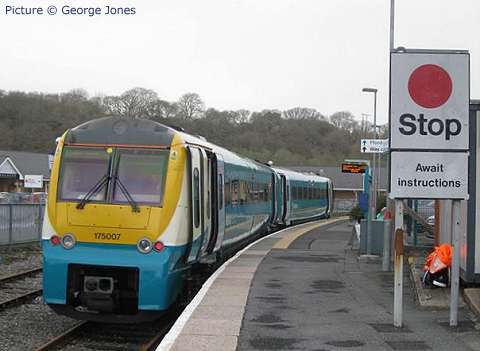
Prior preparation had called for review of the Track Atlas and the Past & Present series volume for West Wales, by Terry Gough.. The latter's pictures of the terminus showed that it was never a particularly impressive station, even in GWR days, and the modern scene was even less so, however it did not wholly prepare us for what we found. To say that the present day Milford Haven station is a 'mean' facility might upset local sensitivity but is the only description I can apply and perhaps the attached pictures will bear it out.
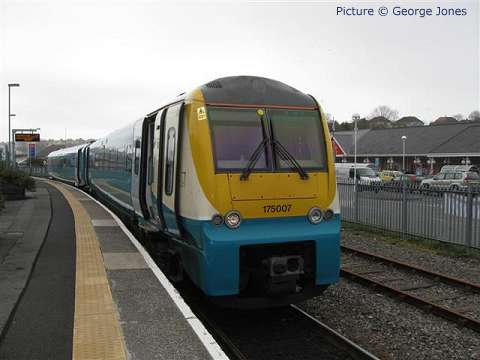
The station - 284 miles from London Paddington, four miles less than Fishguard - is reduced to a single platform alongside a run round loop from a very limited headshunt. The state of the rails would indicate the loop hasn't been used for some time and the present multiple-unit operations have no need for it.
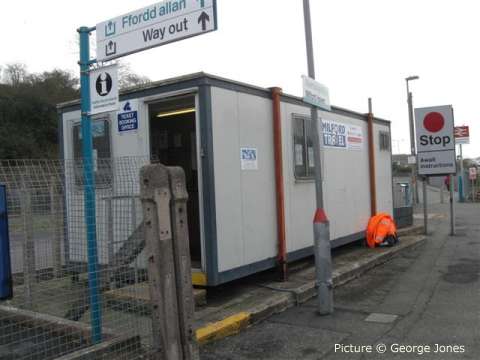
The facilities are the basic bus shelter and the smallest of Portakabins in use as a booking office provided by private firm Milford Travel.
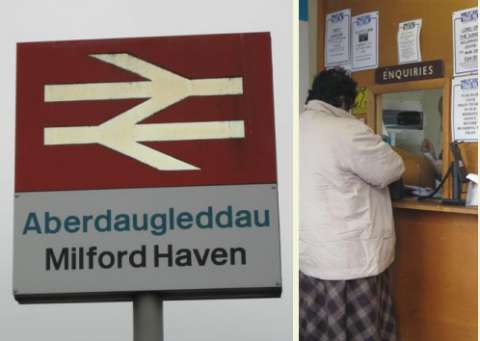
One person is enough in the booking office! Note the 'Enquiries' sign which appears to be n original British Railways 1950s example. The main station sign features the rarely-used Welsh name of the town.
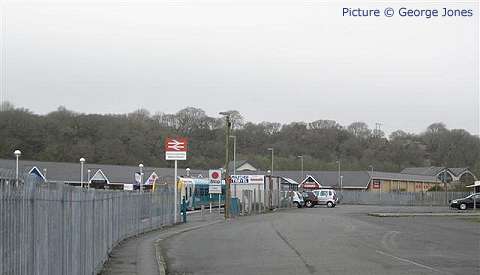
A saving grace might be the size of the car parking area outside of the fence beyond which there is still some evidence of the former Docks line. The former goods yard adjacent to the station has been redeveloped as shopping facilities, with Tesco providing the bulk of the options, and there was just time to nip over for a wash and brush up and re-stock provisions before returning to the train for a 13:08 departure.
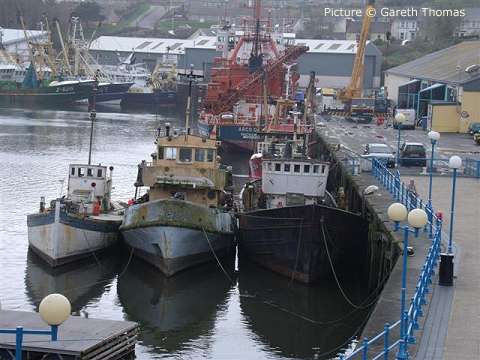
One of the party, Gareth Thomas, was adventurous enough to go beyond the road roundabout and look down into the harbour to find some shipping in view (above). The view is from the roundabout beyond the headshunt; the docks branch once served quays to the left of the picture. Other than waiting two hours for the next train, the options to take in more of the town were strictly limited.
The run down the branch from Clarbeston Road was through rolling countryside in which Haverfordwest is the notable settlement, whose station at least does still provide some of the original architecture and facilities. It also provided the bulk of the passengers joining the train which was headed back to Manchester. Noted were the two branches off the line which provide access to the former Neyland shed, now Gulf Oil, and to Herbrandston and Robeston Elf sidings. The return journey by the outward route was uneventful and on time in Cardiff allowed for transfer to the 16:15 'WAG Express' once more with 57 316 in charge. Home in Wrexham for 19:01 it had been a 13-hour day out for a mere £13, good value for money when everything went according to plan. Pembroke Dock next, perhaps in the autumn, if Club 55 makes a comeback...
North Wales Coast home page Archive Previous Noticeboard